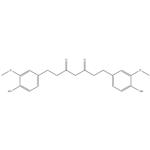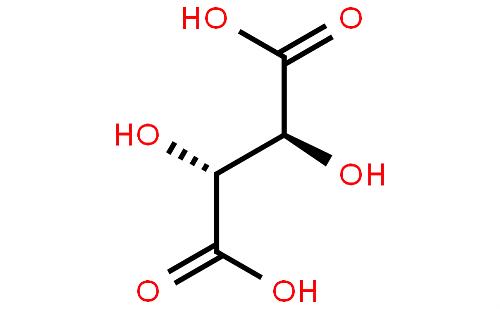Tetrahydrocurcumin: Characterization and Beneficial Effects on Human Diseases
General Description
Tetrahydrocurcumin, a metabolite of curcumin, exhibits enhanced chemical stability and superior oral absorption compared to its parent compound. It is an off-white compound lacking the double bonds of curcumin, which contributes to its distinct properties and lower toxicity. Tetrahydrocurcumin has potent antioxidant capabilities, effectively combating diseases linked to oxidative stress, and it enhances the activity of antioxidant enzymes. Despite relatively poor overall bioavailability in rats, its safety profile is strong, with no toxicity reported at high doses. Its unique molecular characteristics allow for flexible enzyme interactions, suggesting potential therapeutic applications in various human diseases.

Figure 1. Tetrahydrocurcumin
Characterization
Chemical Characteristics and Stability
Tetrahydrocurcumin, a notable metabolite of curcumin, was first identified by Holder et al. in 1978 through studies involving tritium-labeled curcumin. Its chemical structure is similar to curcumin but differs in lacking the double bonds within its central seven-carbon chain. This structural difference results in tetrahydrocurcumin being an off-white compound, unlike curcumin, which is characterized by its vibrant color due to the presence of α, β-unsaturated carbonyl moiety. Tetrahydrocurcumin is primarily isolated in conjugated forms within various tissues, such as the liver, intestines, kidneys, and brain, in addition to being detected unconjugated in the plasma of mice. Studies confirm that tetrahydrocurcumin exhibits superior chemical stability compared to curcumin, particularly in phosphate buffers and aqueous solutions. The terminal half-life of tetrahydrocurcumin is also significantly longer than that of curcumin, demonstrating its greater stability in biological environments. 1
Oral Absorption and Metabolism
Tetrahydrocurcumin not only occurs naturally in several plant roots but can also be synthetically produced through the hydrogenation of curcumin. Its superior solubility and stability compared to curcumin are well-documented. In vivo studies have shown that tetrahydrocurcumin exhibits better oral absorption and higher levels of free tetrahydrocurcumin in liver and serum after daily oral administration, surpassing the absorption levels of curcumin. When administered through various routes, including oral gavage and intramuscular injection, tetrahydrocurcumin consistently demonstrates elevated plasma levels of the compound. Despite its improved gastrointestinal absorption, tetrahydrocurcumin's overall oral bioavailability remains relatively poor in rats, with most of the compound being excreted through non-renal routes. This highlights tetrahydrocurcumin's potential advantages in terms of stability and absorption, albeit with some limitations in bioavailability. 2
Beneficial Effects on Human Diseases
Antioxidant Properties
Tetrahydrocurcumin has gained recognition for its exceptional antioxidant properties, surpassing those of its parent compound, curcumin. This enhanced activity is instrumental in its ability to combat various diseases, including hypertension, atherosclerosis, diabetes, neurotoxicity, and cardiovascular issues. Unlike curcumin, which can produce reactive oxygen species at higher doses due to its complex structure, tetrahydrocurcumin does not generate these harmful compounds, making it a safer alternative. The antioxidant mechanism of tetrahydrocurcumin involves the scavenging of radicals through its phenolic groups and the cleavage of specific C-C bonds during oxidation, resulting in the formation of beneficial o-methoxy phenols that further bolster its antioxidant capacity. Moreover, tetrahydrocurcumin has been demonstrated to enhance the activity of pivotal antioxidant enzymes, such as superoxide dismutase and catalase, suggesting that it may provide significant protective effects against oxidative stress. 2
Cytoprotection and Safety
The cytoprotective qualities of tetrahydrocurcumin are significant, particularly in defending cells against the damaging effects of reactive oxygen species. Several studies have indicated that tetrahydrocurcumin exhibits lower toxicity compared to curcumin, showing no adverse effects even at high dosages when administered over extended periods. In various in vivo studies, tetrahydrocurcumin has been well-tolerated, with no reports of abnormal behavior or health complications in animal models. For instance, in an acute toxicity study, doses ranging from 100 to 10,000 milligrams per kilogram did not result in toxicity, highlighting its safety profile. Moreover, investigations into longevity, such as those conducted on Drosophila and aged mice, suggest that consistent intake of tetrahydrocurcumin may extend lifespan, indicating its potential utility in promoting health and well-being. 2
Distinct Molecular Mechanisms
Tetrahydrocurcumin’s distinct molecular characteristics contribute to its unique therapeutic potential. Unlike curcumin, which interacts with cellular targets through its α, β-unsaturated diketone moiety, tetrahydrocurcumin lacks this functional group, resulting in different molecular interactions. This absence permits tetrahydrocurcumin to escape some of the reactivity associated with curcumin and instead allows it to exhibit a more flexible binding capacity with enzymes and proteins. Studies have shown its ability to inhibit enzyme activity effectively, suggesting that tetrahydrocurcumin’s binding energy in interactions is superior to that of curcumin. Such molecular flexibility not only enhances its biochemical activity but also supports the notion that tetrahydrocurcumin holds promising antiviral, anti-inflammatory, and anticancer properties. Together, the distinct mechanisms and enhanced efficacy of tetrahydrocurcumin position it as a valuable candidate for therapeutic applications in human diseases. 2
Reference
1. Okada K, Wangpoengtrakul C, Tanaka T, Toyokuni S, Uchida K, Osawa T. Curcumin and especially tetrahydrocurcumin ameliorate oxidative stress-induced renal injury in mice. J Nutr. 2001;131(8):2090-2095.
2. Lai CS, Ho CT, Pan MH. The Cancer Chemopreventive and Therapeutic Potential of Tetrahydrocurcumin. Biomolecules. 2020; 10(6): 831.
);See also
Lastest Price from Tetrahydrocurcumin manufacturers

US $0.00-0.00/kg2024-09-19
- CAS:
- 36062-04-1
- Min. Order:
- 0.10000000149011612kg
- Purity:
- ≥99%
- Supply Ability:
- 20tons

US $0.00/Kg/Bag2024-09-19
- CAS:
- 36062-04-1
- Min. Order:
- 2Kg/Bag
- Purity:
- 99% up, High Density
- Supply Ability:
- 20 tons


